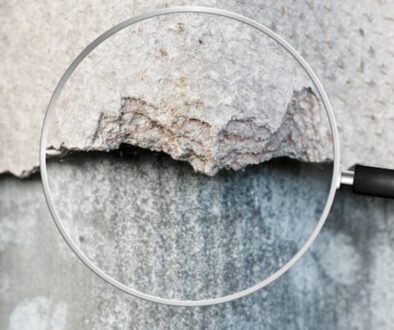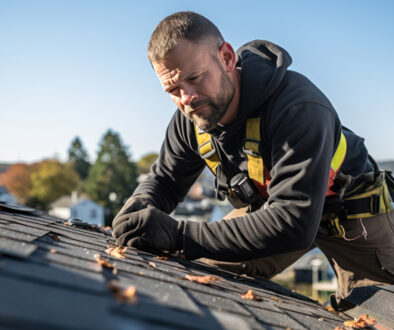What Does a Roof with Hail Damage Look Like?
Hailstorms are a leading cause of roof damage. Even the strongest, sturdiest roofs can sustain damage from strong hailstorms. In the Carolinas, hail size has reached up to 4.5 inches in diameter, which is the size of a CD!
Hail can fall during any time of the year, especially during spring storms and summer storms. After a hailstorm—even if it was brief—it’s important to check your roof for damage. If left untreated, a roof with hail damage can lead to several costly problems:
- Water leaks
- Mold and mildew
- Animal intrusion
- Energy inefficiency (home too cold or too hot)
To minimize the effects of storm and hail damage, it’s best to have your roof inspected in the immediate days after a hail storm. A professional roofing company can inspect your roof and determine if repair or replacement is needed.
How Does Hail Damage a Roof?
Hailstones are solid balls of ice. They can travel at speeds up to 100 miles per hour. Even hail that’s seemingly small can inflict damage on a roof because of its structure and speed. Essentially, hailstones repeatedly collide with a roof at fast speeds and cause weak spots, including cracks, holes, and splits.
Hail Damage and Different Roof Materials
Hail damage to a roof largely depends on the size of the hailstone. Most often, hail causes damage if it’s one inch in diameter or larger. The type of roof also affects how the hail damage will appear.
So, what does hail damage look like on a roof?
Metal Roofs
Metal roofs are the most resistant to hail damage. However, large hailstones can still cause some damage. Visible dents are the most common sign of hail damage to a metal roof.
Shingle Roofs
Hail damage to shingle roofs may not be as apparent. After a hailstorm, look out for these signs of damage:
- Dark or black spots
- Granule loss, which may expose the roof felt (See your downspouts and water diverters for excess granules.)
- Shiny asphalt
- Random damage with no distinguishable pattern
- A split in one or more shingles that is brown or orange in color
In addition to physical roof damage, there are other signs of roof damage from hail:
- Water leaks on the roof or in the attic
- Clogged gutters from loose granules
Need a professional inspection of your roof after a hailstorm?
Contact StaDry Roofing and Restoration today.
Three Steps to Take After a Hailstorm
1. Hire a professional roofing inspector.
Some homeowners decide to inspect their roof after a hailstorm, but this isn’t always smart. Before inspecting your roof for hail damage, determine if it’s safe to do. Can you safely access your roof? Do you have the tools to inspect your roof?
It’s best to contact a local roofing company in the days after a hailstorm. A thorough, professional roof inspector will properly examine your roof and connecting structures for damage.
2. Contact your insurance company.
After your roof inspection, your roofing company will let you know if there’s any damage. If you do have roof damage, you should immediately contact your insurance company to file a roof hail damage insurance claim.
3. Beware of roofing scams.
After a hailstorm, roofing storm chasers visit homeowners and try to convince them to get a new roof. These companies are known for shoddy roofing jobs and taking homeowners’ money without doing any work. Plus, many of them travel out of state to storm-affected areas and don’t live or work in your community. So, if you ever have a problem in the future, you won’t be able to find them. Learn the signs of a roofing scam here.
A roof with hail damage is susceptible to costly repairs.
Don’t wait to have your roof inspected after a hailstorm.




